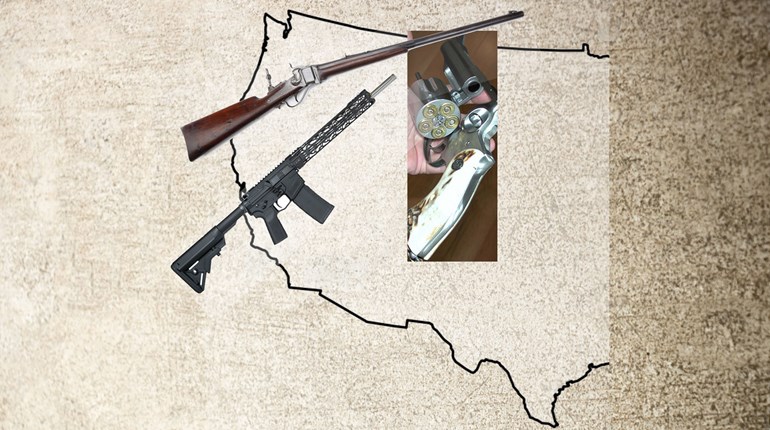
“Bear spray and firearms are the last tools in your toolbox," said the National Park Service in a 2018 article. Which tool do you pack when preparing to recreate in bear country?
While the first line of defense is understanding bear territory, aggression triggers and behavior to avoid unwanted encounters, having something at your side (if not two things) to back you up is smart when you’re in the thick of it.
It’s long been debated amongst outdoors enthusiasts: To carry bear spray or a firearm? Both? Before you make your decision about a bear self-defense tactic, you’d be remiss to not explore the pros and cons of carrying either tool.
Let’s tackle bear spray first, a non-lethal option used by many. Since its development in the 1980s by a University of Montana graduate student, bear spray has been used as a self-defense product in the woods. Bear spray is more powerful than the pepper spray we women stash in our purses, and contains ingredients strong enough (capsaicin and related capsaicinoids) to shut down a risky encounter with a bear. However, it’s easy to wonder if the stuff is actually effective when it could be your last chance at escaping an attack. Statistics reveal that yes, it’s effective 90 percent of the time, according to a 20-year study in Alaska consisting of 83 bear incidents.
But what about when it’s not enough? Consider all the factors that impact the effectiveness of bear spray: 7 percent of the time in the Alaska study, the wind interfered with spray accuracy. And at double that rate, users reported having accidentally sprayed themselves! Elements standing between you and the bear, like brush, trees, leaves and rocks could also interfere with the spray’s power. Users should be aware that bear spray also expires, causing it to be less effective.
"... if the object is a high-caliber handgun, you have at least a 96 percent chance of successfully fending off the attack ..."
If a bear attacks you aggressively and starts a fight, the National Park Service says to, “fight back with any object available.” Well, if the object is a high-caliber handgun, you have at least a 96 percent chance of successfully fending off the attack, according to a collection of 73 bear encounters with three failures involving handguns prior to August 2019. Surprisingly, even a 9 mm pistol can do the trick; of four bear attacks, three of them being with a grizzly, a 9 mm was successful 75 percent of the time.
So, you decide … a 90 percent self-defense success rate or 96 percent? When it comes to my own safety, I’d prefer both options. Read Carrying in the Great Outdoors for the laws on bringing your gun into the wilderness.
Really, at the end of the day, the best way to avoid getting eaten by a bear is to respect wild animals by giving them plenty of space and following all bear guidelines provided by the park, such as proper food storage.















































